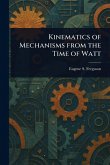"The Theories and Practice of Centrifugal Ventilating Machines" by Daniel Murgue, originally published in 1883, delves into the mechanics and practical applications of centrifugal ventilation systems. This comprehensive treatise covers various aspects including centrifugal force, equivalent orifice, and theoretical depression. Murgue's work provides insights into the performance and design of these machines, essential for industrial and mining environments. Referencing locations such as Frameries, Grand Hornu, and Cortlandt Street, the book also includes discussions on topics such as 'vis viva, ' 'passive resistances, ' and 'tangential speed'. The work offers a detailed look at the theories underpinning the practical use of centrifugal ventilators, making it a valuable resource for engineers and historians of technology interested in the evolution of ventilation systems. This work has been selected by scholars as being culturally important, and is part of the knowledge base of civilization as we know it. This work was reproduced from the original artifact, and remains as true to the original work as possible. Therefore, you will see the original copyright references, library stamps (as most of these works have been housed in our most important libraries around the world), and other notations in the work. This work is in the public domain in the United States of America, and possibly other nations. Within the United States, you may freely copy and distribute this work, as no entity (individual or corporate) has a copyright on the body of the work. As a reproduction of a historical artifact, this work may contain missing or blurred pages, poor pictures, errant marks, etc. Scholars believe, and we concur, that this work is important enough to be preserved, reproduced, and made generally available to the public. We appreciate your support of the preservation process, and thank you for being an important part of keeping this knowledge alive and relevant.
Bitte wählen Sie Ihr Anliegen aus.
Rechnungen
Retourenschein anfordern
Bestellstatus
Storno








